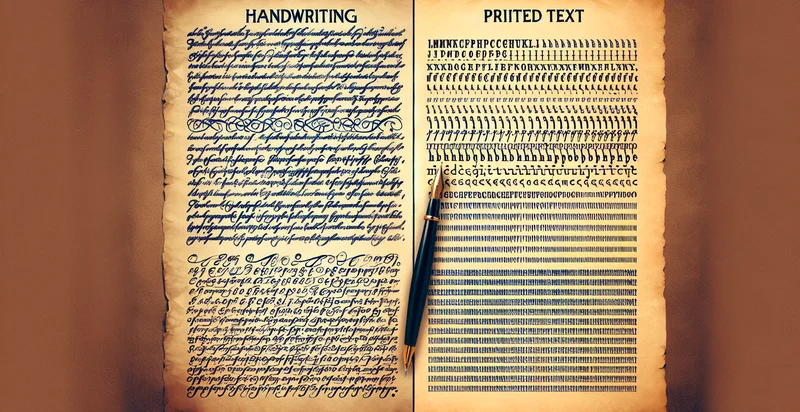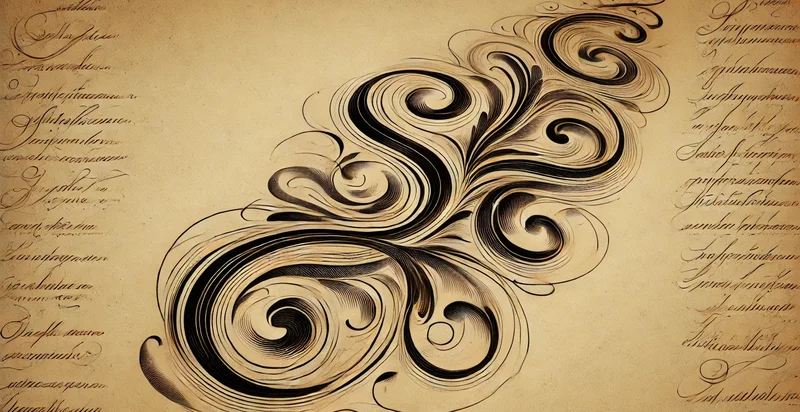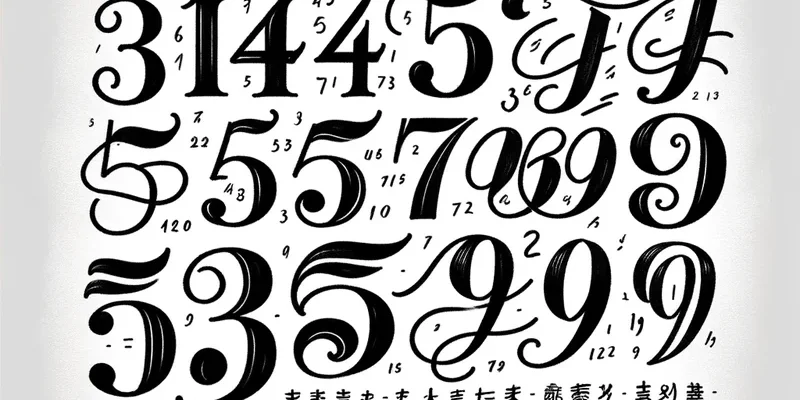Identify handwriting vs printed text
using AI
Below is a free classifier to identify handwriting vs printed text. Just upload your image, and our AI will predict if the text is handwritten or printed - in just seconds.


Contact us for API access
Or, use Nyckel to build highly-accurate custom classifiers in just minutes. No PhD required.
Get started
import nyckel
credentials = nyckel.Credentials("YOUR_CLIENT_ID", "YOUR_CLIENT_SECRET")
nyckel.invoke("handwriting-vs-printed-text-identifier", "your_image_url", credentials)
fetch('https://www.nyckel.com/v1/functions/handwriting-vs-printed-text-identifier/invoke', {
method: 'POST',
headers: {
'Authorization': 'Bearer ' + 'YOUR_BEARER_TOKEN',
'Content-Type': 'application/json',
},
body: JSON.stringify(
{"data": "your_image_url"}
)
})
.then(response => response.json())
.then(data => console.log(data));
curl -X POST \
-H "Content-Type: application/json" \
-H "Authorization: Bearer YOUR_BEARER_TOKEN" \
-d '{"data": "your_image_url"}' \
https://www.nyckel.com/v1/functions/handwriting-vs-printed-text-identifier/invoke
How this classifier works
To start, upload your image. Our AI tool will then predict if the text is handwritten or printed.
This pretrained image model uses a Nyckel-created dataset and has 2 labels, including Handwriting and Printed Text.
We'll also show a confidence score (the higher the number, the more confident the AI model is around if the text is handwritten or printed).
Whether you're just curious or building handwriting vs printed text detection into your application, we hope our classifier proves helpful.
Related Classifiers
Need to identify handwriting vs printed text at scale?
Get API or Zapier access to this classifier for free. It's perfect for:
- Automated Document Processing: Businesses can utilize the handwriting vs printed text identifier to streamline document processing workflows. Automatically categorizing documents based on text type can enhance the efficiency of data entry and archival processes, reducing manual intervention.
- Digital Archiving of Historical Documents: Libraries and museums can employ this function to digitize and categorize historical texts. By distinguishing between handwritten manuscripts and printed material, institutions can prioritize restoration efforts and improve accessibility for researchers and the public.
- Educational Tools for Handwriting Recognition: Educational technology companies can integrate this identifier into their learning platforms to support handwriting recognition software. By identifying handwritten notes, the tools can provide targeted feedback and personalized learning experiences to students.
- Fraud Detection in Financial Services: Financial institutions can implement this solution to enhance their document verification processes. Differentiating between handwritten signatures and printed text within financial documents can help identify fraudulent entries and improve security measures.
- Enhanced OCR Capabilities: Companies offering Optical Character Recognition (OCR) services can improve their offerings by including handwritten text detection. This combination can maximize the potential of converting both handwritten and printed documents into searchable digital formats.
- Legal Document Management: Law firms can use the identifier to sort and manage large volumes of legal documents effectively. By distinguishing between handwritten notes and printed legal texts, attorneys can streamline case preparation and improve organization for better accessibility.
- Customer Feedback Analysis: Businesses can analyze customer feedback forms that contain both handwritten and printed responses. By using this technology, they can categorize feedback types, allowing for more accurate sentiment analysis and better understanding of customer opinions.


